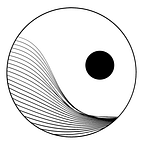What is Web3 ? And How does it Differ from Web2 and Web1 ?
So what is Web3 ? We could say it is a term in flux, and different people may define it differently. Is a vision for the evolution of the internet as we know it. People can not only read & write content — but can also own assets on the web.
Centralization has made it possible for billions of people onboard onto the internet. It has also helped create a robust architecture on which the World Wide Web lives.
A handful of companies, hence, exercise control over big parts of the internet — they have the power to decide what should be allowed and what not. One needs to log on to platforms owned by large companies such as Google or Facebook to either share a video, message friends or post a story.
Web3 is an ongoing project to help address this dilemma. It embraces a decentralized internet — an internet that is built, maintained and operated by its users — as opposed to being monopolized by a few big companies.
Quick Facts
- The term Web3 was originally coined in 2014 by Gavin Wood, co founder of Ethereum & later founder of Polkadot
- Web3 interest started exploding into the mainstream somewhere around Sep-Oct 2021 — as is seen in the Google Search Trends for the term Web3.
- 65% of all Web3 developers joined in 2021 alone, and over 20% joined Ethereum
The journey from Web1 — Web2 — Web3
The key difference between the two comes down to “ownership”. Who owns the content (data and the apps) on the web ?
Web3 utilizes blockchains, NFTs and cryptocurrency — which shifts power towards the users in the form of ownership. This is best summed up by a Twitter post by @himgajria back in 2020. In Web3, users can have “ownership” of their assets — a big jump from Web1/Web2.
Evolution of the World Wide Web
Let’s break the evolution of the web into 3 distinct periods (note that the definitions are loose and not precisely defined officially)
WEB 1.0 — THE READ-ONLY WEB
What we now call “Web 1.0” was created by Tim Berners Lee, and was in place from around 1990–2004. This was the earliest iteration of the web — a small number of content creators wrote web pages for the entire web audience.
Web1 was focussed on access to information via web pages, which were connected through hyperlinks — somewhat like a massive encyclopedia on the internet. But there was a lack of forms, visuals and interactivity that the modern internet has. This is the reason it is called the “read only” web !
An example of Web 1.0 can be found here! Online listings like CraigsList can still be categorized as Web1 — the prime motive is presenting information to visitors like a brochure.
WEB 2.0 — THE READ-WRITE WEB
The beginning of Web 2.0 can be marked in 2004 with social media platforms beginning to take off. The number of content creators increased substantially , and platforms flourished with user generated content. There was also an emphasis on user to user interactions, and on the end user experience.
Basically the transition was from just “reading” aka consuming to “writing” aka creating content, and/or interacting with others. This could mean a variety of things, spanning from being a Youtube or Instagram content creator, or simply creating a Google account and leaving user reviews for places, podcasting, writing a blog, etc.
WEB 3.0 — THE READ-WRITE-OWN WEB
The term Web3 was coined in 2014 by Ethereum co-founder Gavin Wood. The term was intended to encompass a key problem felt by many in the Web — that of trust. The vast majority of the Web today is centered around users trusting a handful of companies, which are expected to act in the interest of the public.
At its core, Web3 utilizes blockchains, cryptocurrencies, and NFTs to distribute ownership and reduce the “trust” factor in the Web. Some of the core ideas of Web3 include -
- Web3 is trustless — third party trust is replaced by economic incentives
- Web3 is permissionless and everyone gets equal access to participate in the web
- Web3 is decentralized wherein ownership is distributed amongst the builders and users, instead of being concentrated in the hands of a few
- Web3 has native payments in the form of cryptocurrency and does not rely on traditional financial architecture of banks and payment processors
In reality, it is highly probable that elements of Web2 and Web3 together will play a role in the future. It is about time we embrace the aspects of Web3 which can address genuine problems that exist in Web2.
